
New Electrochemical Technology Could De-acidify the Oceans
two cycles: 1) the biological carbon cycle stores CO2 in plant matter and soils, and 2) the aqueous carbon cycle absorbs CO2 from the atmosphere into the oceans. Each of these cycles accounts for 25 per cent and 30 per cent of emitted CO2, respectively.CO2 that dissolves in the oceans reacts to form chemicals that increase the acidity of the oceans. The dissolution of minerals from rocks along coastlines act to counterbalance this acidity, in a process called geological weathering, but the extreme increase in the rate and volume of CO2 emissions, especially over the last 60 years, has far exceeded the

Why There May Be Oceans Inside Dwarf Planets Beyond Pluto
looking at the ratios of various isotopes (atoms that have more or fewer particles called neutrons in their nucleus) in the frozen methane that coats Eris and Makemake, two dwarf planets a little smaller and considerably more remote than Pluto.The authors claim their observations are evidence of chemical reactions between internal ocean water and the ocean floor rock, and also of fairly young, possibly even present day, plumes of water. The authors suggest that heat from the decay of radioactive elements in the rock is sufficient to explain how these internal oceans have been kept warm enough to
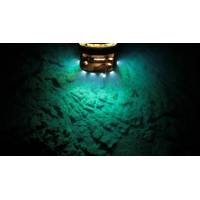
NOAA Announces 2025 Ocean Exploration Funding Opportunity
technologies (e.g., autonomous systems, non-destructive sensors, artificial intelligence/machine learning), and/or analysis of ocean exploration datasets or samples that already exist and are publicly accessible.NOAA Ocean Exploration is particularly interested in projects that explore the physical, chemical, and biological environments and processes in the deep oceanic water column and projects that will improve genetic libraries for species-level environmental DNA (eDNA) analysis of deep-sea species.All proposals must demonstrate how the proposed project relates to at least one of the exploration

WHOI Board Chair Paul Salem Gives $25 Million for Ocean-based Climate Solutions
inject some much-needed reality into the carbon market.”Existing ocean-based solutions could account for more than one-third of the interventions needed to avoid exceeding the 2°C warming threshold laid down in the Paris Climate Agreement. In addition, methods that leverage the ocean’s chemical and biological processes could, if proven and deployed at-scale, supplement these efforts, but only if humanity also rapidly cuts greenhouse gas emissions.Recent funding announcements signal a long overdue shift in attention into the role of the ocean in addressing climate change. Last year&rsquo
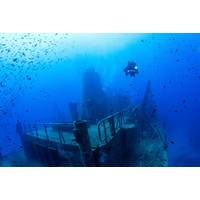
Shipwrecks Teem with Underwater Life, from Microbes to Sharks
tiger sharks traveling from one wreck to another, possibly using the shipwrecks like rest stops during migration.In the deep sea, life growing on shipwrecks can even generate energy. Tube worms that grow on organic shipwreck materials such as paper, cotton and wood host symbiotic bacteria that produce chemical energy. Such tube worm colonies have been documented in the Gulf of Mexico on the steel luxury yacht Anona.Biological mysteries aboundDespite their biological value, shipwrecks can also threaten underwater life by altering or destroying natural habitats, causing pollution and spreading invasive

Fugro Nets Offshore Namibia Survey Contract
data collection, enabling Galp to make informed decisions for safe energy operations in the region," Fugro said.With fieldwork completed earlier this month, the survey reached depths of 2000 meters. The Fugro Venturer, a geophysical vessel, collected sediment samples for environmental and chemical analysis before an autonomous underwater vehicle (AUV) captured seabed video footage. Additionally, Fugro acquired in situ full ocean depth water profiles and water samples to measure the current biodiversity. The Geo-data collected through this survey will support the identification of potentially
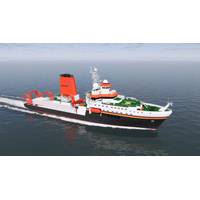
Kongsberg Sensors and Equipment for Germany's New Ocean Research Vessel
scientific echo sounder with acoustic doppler current profiler capability, which may be used to measure the velocity of fish in a water column. The EK80 measures the speed and direction of currents in a water column, which helps researchers understand how organisms, nutrients, and other biological and chemical constituents are transported through the ocean.Kongsberg Maritime will supply a complete integrated scientific handling system for Meteor IV, enabling safe and efficient operations with cables and ropes up to 12,000 meters in length.The scientific winch system comprises two direct pull winches,
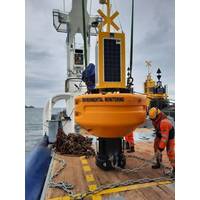
OSIL Buoy for Dublin City University Project
on the easy to use PREDICT Data Portal. The environmental data is catalogued, mapped & displayed in an interactive web environment, facilitating collaboration and partnership planning.The intention is to predict and assess coastal vulnerability by systematic and sustained monitoring of physical, chemical and biological processes occurring in coastal zones, by integrating mathematical modelling, remote and in-situ sensing, physical and chemical oceanography and seabed mapping from various sources including the Dublin Bay buoy. These models will then contribute to future planning in a diversity of
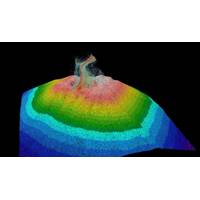
SOI Steps Ahead on Ocean Mapping
we found via ROV SuBastian's video footage, there is a lot of life down there. We mapped using Falkor (too)'s ship capabilities, and we had MBARI's AUVs with us on board, sent down to do a very high-resolution map of areas of interest.And then we had a CTD that went down and measured the chemical composition. Then we sent the ROV down, and almost every time they found something new.Our second cruise was to test technology, as we also have technology test cruises and not just science and exploration. That one was to test new sensors for coral reef health assessment around Puerto Rico



 February 2024
February 2024





